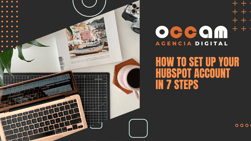Index Content
According to the study carried out by Nielsen Media Spain on the consumption of digital content by users during the Covid-19 confinement, the time people spent on the internet increased by 11 hours a day compared to previous use. What does this tell us? Indeed, the use of digital content is always on the rise, and it has been especially boosted during the pandemic as users have had more time to consume content.
But what is digital content and what types are there? Let's take a look at them in this post.
what is digital content?
Although we can get an idea of what the term "digital content" can mean, perhaps we don't know very well what we can consider content and what we can't. To better understand the concept, it is important to know what each of the words that make it up refer to.
When wetalk about "content" we refer to all those materials that transmit a message with information, that is to say, all those elements that manage to entertain people and provide them with something informative, communicative or educational. It is therefore important that for a message to be considered content it must provide something to the consumer, whether at a work, cultural, etc. level.
On the other hand, when we talk about "digital" we refer to all those channels through which this content can be distributed. Previously, the channels of communication were none other than the "traditional" ones, i.e. television, radio or newspapers. However, with the arrival of the Internet and the growing boom of this and of social networks, a new means of communication has been created: the digital medium.
Therefore, we can summarise that digital contents are all those informative, educational or communicative contents that we can distribute through digital elements. An important characteristic is that all of them are based on the use of the internet to be able to share them with the audience.
In addition, the use of the internet and social networks has meant that any user can create digital content and share it without the need for the communications department (for example) to take care of this aspect.
Value of digital content in my inbound strategy
When digital content is used for commercial purposes or to help us in our inbound marketing strategy, the results obtained are always very satisfactory. Creating quality content in digital formats will help our brand attract new visitors that could become customers in the near future.
In addition, one of the main objectives of our inbound marketing campaign is to define our buyer persona. Once we have defined it, using digital content to address them in a personalised way will make them feel confident in our brand.
Digital content will be one of our best allies in any marketing campaign because, on many occasions, it is not enough to have a website or be present on social networks. It is necessary to create quality digital content to give value to our brand and help the user to guide them through the buying process. Also, by creating personalised digital content for our buyer personas, we are providing a unique value to our company that will make customers want to stay with us for future projects and, therefore, we will obtain loyalty on their part.
Therefore, we must always take into account digital content when creating a marketing strategy for our company because it will be very useful, but... what types of digital content can we create? If you are asking yourself this question is because you are probably interested in creating content for your brand so... let's see them!
Examples of digital content
As we have mentioned throughout this post, there are a large number of examples of digital content that we can vary in their use depending on the type of audience we want to address, the message we want to convey, etc.
For example, if we want to show how one of our products works, it would be a good option to use video, whereas if we want to visually accompany an informative post, we can design an infographic that summarises and illustrates the concepts we are talking about.
Digital contents are classified into four different types and within each of them, we can find different examples, i.e. there are four formats in which the different digital contents are developed: text, image, audio and video.
Within the textual format, we can find some digital contents such as:
- Blog posts: By writing daily blog posts about our services, explaining terms related to our work, we give our brand more explanatory value.
- Ebooks: We can create digital ebooks that our clients can obtain and consult online, explaining how to develop a marketing campaign, for example.
- Webinar: A webinar is a content that provides a lot of authority to our online project and also allows us to attract users interested in doing it. In addition, a webinar contains content designed for dissemination and teaching, so it will help us toimprove our positioning.
Within the image format we can find:
- Photographs: They make a text visually more attractive when they accompany it, for example, if a post contains images.
- Infographics: Although they combine the text and image format, infographics are characterised by making the information visually more attractive.
- GIFs: They serve to have a closer tone with the user and add a touch of humour.
- Memes: They are one of the most widely used humorous elements in social networks and will help us to connect in a friendly way with our audience.
In the audio format we find:
- Podcast: They are a good idea to give a human touch to our company and help us to better explain our ideas or projects.
- Interviews: Talking to experts related to marketing terms, for example, gives us authority and improves the image of our brand.
- Audiobooks: Like ebooks, they can help our clients to better understand the dynamics of our company and how our products or services work.
Finally, in the audiovisual format, there is digital content such as:
- Live broadcasts: Streaming the use of a product or answering questions and answers helps to connect with the consumer .
- Tutorials: Video tutorials on how our products work will be very useful for the customer.
- Product reviews: Doing reviews will help the user to get to know the product better before buying it and to feel more confident because they know what they are going to consume.
Now that you know what digital content is and how you can use it in your marketing projects, it is time to put yourself to the test and dedicate all your time and desire to build your brand identity through the online world.





